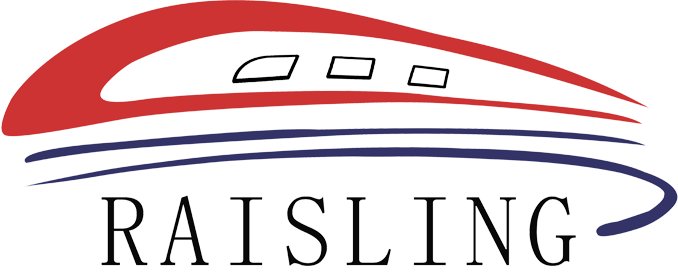Rail Elastic Clips: The Unsung Heroes of Rail Maintenance
Aug 04,2025
Rail Elastic Clips: The Unsung Heroes of Rail Maintenance Introduction to Rail Elastic Clips In the realm of rail transport, every component plays a crucial role in maintaining safety and efficiency. Among these components, **rail elastic clips** often go unnoticed. However, their contribution to rail maintenance is monumental. These small yet significant devices are vital for securing rails to sl

Rail Elastic Clips: The Unsung Heroes of Rail Maintenance
Introduction to Rail Elastic Clips
In the realm of rail transport, every component plays a crucial role in maintaining safety and efficiency. Among these components, **rail elastic clips** often go unnoticed. However, their contribution to rail maintenance is monumental. These small yet significant devices are vital for securing rails to sleepers, ensuring stability, and optimizing the overall performance of rail systems. In this article, we will delve deep into the world of rail elastic clips, exploring their design, functionality, and the pivotal role they play in maintaining rail infrastructure.
Understanding Rail Elastic Clips
What Are Rail Elastic Clips?
Rail elastic clips are specialized fastening devices designed to hold railway tracks securely in place. Made from durable materials such as steel or composite materials, these clips are engineered to withstand the immense forces exerted during train operations. Their elastic properties allow them to absorb vibrations and movements, providing a secure fit that enhances track stability.
Types of Rail Elastic Clips
There are several types of rail elastic clips, each designed to meet specific rail system requirements:
- **Standard Rail Clips:** Commonly used in traditional rail systems, these clips provide effective holding power for standard gauge tracks.
- **Shouldered Clips:** These clips feature a shoulder that enhances their gripping ability, making them ideal for heavy-duty applications.
- **Composite Clips:** Made from advanced composite materials, these clips offer lightweight solutions without compromising strength and durability.
The Importance of Rail Elastic Clips in Rail Maintenance
Enhancing Track Stability
One of the primary functions of rail elastic clips is to ensure track stability. By securely fastening the rails to the sleepers, these clips minimize lateral movement and vertical displacement, which can lead to track misalignment and increased wear. Their elastic design allows for some flex, helping to absorb shocks and vibrations caused by passing trains.
Reducing Wear and Tear
Rail elastic clips contribute significantly to reducing wear and tear on both the rails and the sleepers. By providing a secure fit, they help maintain the proper gauge of the track, thereby preventing issues such as rail fatigue and sleeper degradation. This reduction in wear extends the lifespan of not only the clips themselves but also the entire rail infrastructure.
Improving Safety Standards
Safety is paramount in rail transport, and rail elastic clips play a crucial role in ensuring compliance with safety standards. A well-maintained track system reduces the risk of derailments and accidents, making these clips essential for the safe operation of trains. Their reliability and effectiveness in securing rails directly contribute to the overall safety of rail transport systems.
Material and Design Considerations
Material Choices for Durability
The materials used in the manufacturing of rail elastic clips play a significant role in their performance and longevity. High-quality steel is the most common choice due to its strength and resilience. However, advancements in materials science have led to the development of composite clips that offer excellent durability while being lighter and more resistant to corrosion.
Design Innovations in Rail Elastic Clips
Innovative design features have improved the functionality of rail elastic clips. Features such as **anti-corrosion coatings** and **modular designs** have been integrated into modern clips, making them more efficient and easier to install. These innovations enhance the clips' performance and reduce maintenance costs over time.
Installation and Maintenance of Rail Elastic Clips
Proper Installation Techniques
The effectiveness of rail elastic clips is heavily dependent on proper installation. Here are key steps to ensure correct installation:
1. **Preparation:** Ensure that the rail and sleeper surfaces are clean and free of debris.
2. **Alignment:** Align the rail accurately with the sleeper, maintaining the correct gauge.
3. **Securing the Clips:** Position the clips in their designated slots, applying even pressure to secure them firmly.
Routine Maintenance Practices
Regular inspection and maintenance of rail elastic clips are essential to ensure their long-term effectiveness. Key practices include:
- **Visual Inspections:** Regular visual checks to identify signs of wear or damage.
- **Torque Checks:** Ensuring clips are tightened to the manufacturer’s specifications to maintain the appropriate level of tension.
- **Replacement:** Timely replacement of worn or damaged clips to prevent track instability.
Challenges and Solutions in Rail Elastic Clip Usage
Common Challenges Faced
Despite their effectiveness, rail elastic clips face several challenges, including:
- **Corrosion:** Exposure to environmental elements can lead to corrosion, compromising the clip's integrity.
- **Overloading:** Excessive loads can cause deformation or failure of the clips if they are not designed to handle specific weight limits.
Innovative Solutions to Address Challenges
To combat these challenges, the rail industry is continuously innovating. Solutions include:
- **Coatings and Treatments:** Using advanced coatings can enhance corrosion resistance, prolonging the lifespan of clips.
- **Design Modifications:** Incorporating features that allow clips to better handle dynamic loads can prevent failure under stress.
The Future of Rail Elastic Clips
Emerging Technologies in Rail Maintenance
As rail technology advances, so too does the design and functionality of rail elastic clips. Innovations in materials science and engineering are leading to the development of smarter, more efficient clips that can provide real-time data on track conditions. These advancements will undoubtedly enhance rail maintenance strategies, ensuring safer and more reliable rail transport systems.
Sustainability Considerations
The rail industry is also moving towards more sustainable practices. The use of recyclable materials in the production of rail elastic clips is becoming a priority, contributing to a reduced environmental footprint. Additionally, advancements in clip design that promote longer service life can help decrease the frequency of replacements, further supporting sustainability efforts.
Conclusion
Rail elastic clips may often be overlooked in discussions about rail transport infrastructure, yet their importance cannot be understated. As the unsung heroes of rail maintenance, they provide essential support for track stability, safety, and durability. By understanding their function, types, and the best practices for installation and maintenance, we can appreciate the critical role they play in ensuring the smooth operation of rail systems. Moving forward, continued innovation and sustainable practices will enhance the effectiveness of rail elastic clips, securing their place as vital components in the future of rail transport.
Frequently Asked Questions (FAQs)
What are the primary functions of rail elastic clips?
Rail elastic clips primarily secure railway tracks to sleepers, enhance track stability, reduce wear and tear, and contribute to overall safety.
How do rail elastic clips differ from standard rail clips?
Rail elastic clips are designed with elastic properties that allow them to absorb vibrations and movements, while standard rail clips may not have this feature, making them less effective in maintaining track stability.
What materials are commonly used to manufacture rail elastic clips?
Rail elastic clips are typically made from durable materials such as steel and advanced composites designed to withstand the forces exerted during train operations.
How often should rail elastic clips be inspected?
Routine inspections should be conducted regularly to identify any signs of wear or damage, with specific attention given to conditions that could lead to clip failure.
Can rail elastic clips be recycled?
Yes, many rail elastic clips are made from recyclable materials, and the rail industry is increasingly focused on sustainability, promoting the use of clips that can be reused or recycled.
By understanding and appreciating the role of rail elastic clips, we can ensure the safety and efficiency of rail transport systems, paving the way for improved infrastructure and technology in the future.
Previous:
Recommended
Asia Pacific Rail 2025 Concludes in Bangkok, Showcasing Rail Industry's Future
Bangkok, May 29 - The Asia Pacific Rail 2025, a leading event in the railway and rail transit industry, successfully concluded on May 29 in Bangkok, Thailand.
Contact Us








